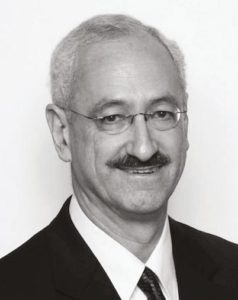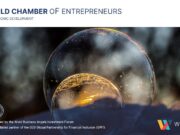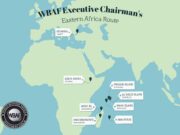 Venture Capital and
Venture Capital and
Angel Investing form
part of the Early-
Stage Entrepreneurial
Economy (ESEE) and
play a crucial role in
the future of American
jobs and economic growth, says
Charles L. Sidman, Managing
Partner at ECS Capital Partners.
Angel Investing is flourishing in the United States. Indeed, it had a banner year in 2016, with the Angel Capital Association (ACA) reporting over 60 exits by its members (without which it has been said that Angels are merely philanthropists or unpaid volunteers). American Angel activity reached new heights of international interaction in 2016, with Americans investing in enterprises world-wide, citizens of other countries investing in American firms, markets becoming increasingly global, acquiring firms reaching across borders in all directions, etc. Prospects have never been brighter for Angel Investors, in the U.S. and worldwide.
Importantly, Angel Investing has grown and evolved such that a new name, and revised understanding and policies, are needed. Angel Investing began as individuals putting their own money to work in support of start-up entrepreneurs, and is differentiated from the pooled and professionally managed capital deployed by Venture Capital (VC) firms (often to more advanced and thus less risky, laterstage but still not-yet-mature enterprises.) As distinguished from earlier support from Friends and Family, Angel and VC investing are still largely open only to wealthy individuals legally qualified as Accredited Investors, who thus have preferential access to a rewarding asset class.
Most of these characteristics and distinctions have now morphed and broadened. Some individual Angels and VC firms now invest in enterprises spanning the spectrum of developmental stages (such that start-ups no longer always obtain initial funding from Angels and then graduate to professionally managed VCs.) Furthermore, individuals often invest in and support entrepreneurship both directly and through pooled funds. Non-Accredited (i.e. less wealthy) individuals are now able to invest in the entrepreneurial endeavor via several forms of Crowdfunding. And burgeoning numbers of accelerators and incubators provide signifi cant mentoring and assistance, plus funding from an aggregated pool, to entrepreneurs in certain sectors. Indeed, the 60+ exits rightly celebrated by the American ACA in 2016 included deals fi nanced through all of these mechanisms, by individuals as well as organizations, qualifi ed only by their common ACA membership. Finally, in various economies including North American, some companies are fi nanced through the public markets from an early stage comparable to those receiving Angel and VC support.
What unifi es these different fi nancing mechanisms is that they all support the Early-Stage Entrepreneurial Economy (ESEE), providing signifi cant job and economic growth and together constituting a highly rewarding fi nancial asset class. Angels and VC represent subsets of ESEE investors, but taking either of these terms synonymously for the others ignores important distinctions and creates confusion and misunderstanding, since they jointly support the Entrepreneurial Economy but have clear policy and operational distinctions. We must also realize that whatever the mode of ESEE fi nancing, alignment of interests among all mechanisms and stakeholders is critical for fairness, sustainability and optimal entrepreneurial success. Thus, no single sector can or should claim to speak for all.
What are the major differentiators of various forms of ESEE investing, beyond their natures as active vs. passive activities and different legal formulations? An analogy with automobile maintenance may be useful. Just as anyone can learn, and actually work at maintaining their own vehicle (unlike aircraft maintenance or medical care, which require special training and certifi cation), so too can anyone engage in Angel, Crowdfunding and/or public market investing (depending on their fi nancial circumstances and local legal requirements.) These mechanisms provide active individual access to ESEE investing as well as educational and experiential opportunities, for those with resources and appetite for such. In contrast, each car owner can also utilize professionals to do their maintenance, and most owners go this route. In both arenas (auto maintenance and investing), individuals with personal experience are more knowledgeable consumers of professional services, but the results obtained by professionals, with greater experience, time and other resources, are generally better than what individuals achieve on their own. Angel investing done in groups is superior to that of individuals operating alone, but still lacks many of the advantages available to professionals. This difference in result quality obtained by individuals vs. professionals is responsible for the almost universal problem of organized Angel groups in member withdrawal after an initial period of enthusiasm, and the need for ongoing new member recruitment.

“A key trend thus predicted for 2017
onwards is the continued development
of pooled and managed funds.”
A key trend thus predicted for 2017 onwards is the continued development of pooled and managed funds (therefore actually VC, even if titled Angel), especially those operating early in company development. Such funds are the professional partners of Angel investors, as well as competitors and sources of follow-on fi nancing beyond the capacity of even syndicated groups of Angels. Further, while Angel investing, Crowdfunding and the public markets are available to many or all, most investors do not have the sustainable interest or resources to pursue such investing effectively on their own, and thus should probably participate in ESEE investing via managed vehicles. Finally, since many of the best early investment opportunities are not available through either Crowdfunding or public markets, I and others have suggested in the U.S. that all individuals (not just the Accredited minority) be allowed access to pooled and managed funds (perhaps according to their established individual limits for Crowdfunding participation.) Such change would be a natural progression of current trends in loosening the undemocratic grip of decades-old restrictions, expand the resources available for ESEE support, and make the highly remunerative ESEE asset class available to everyone and not just the already wealthy.
To summarize, Angel investing in the U.S. and globally is vigorous and still improving, with increasing activity and appreciation for the importance of entrepreneurship. That said, however, the greatest growth avenues for ESEE support appear to lie in pooled and managed funds, as well as facilitated and modernized public markets (including Crowdfunding.) We as Angels enjoy and have our part to play, as participants, leaders and educators, but must acknowledge and mutually support our sibling partners in the ESEE fi nancing ecosystem.



























